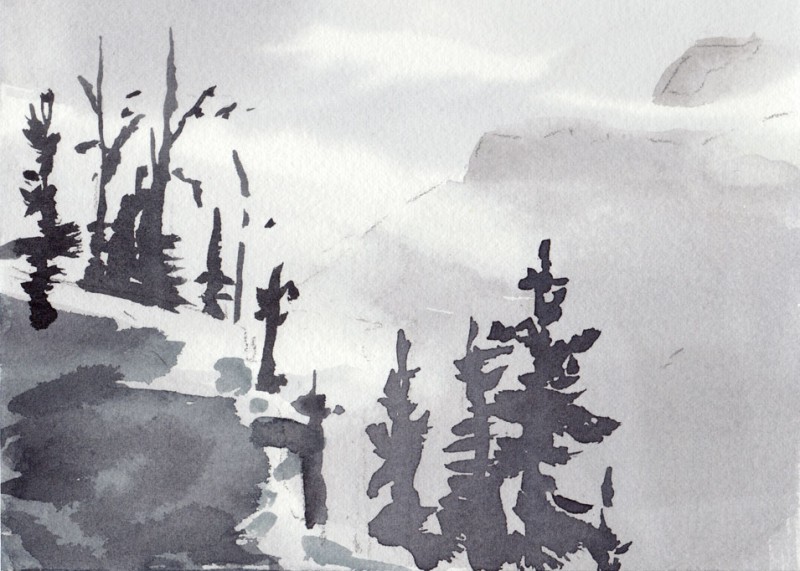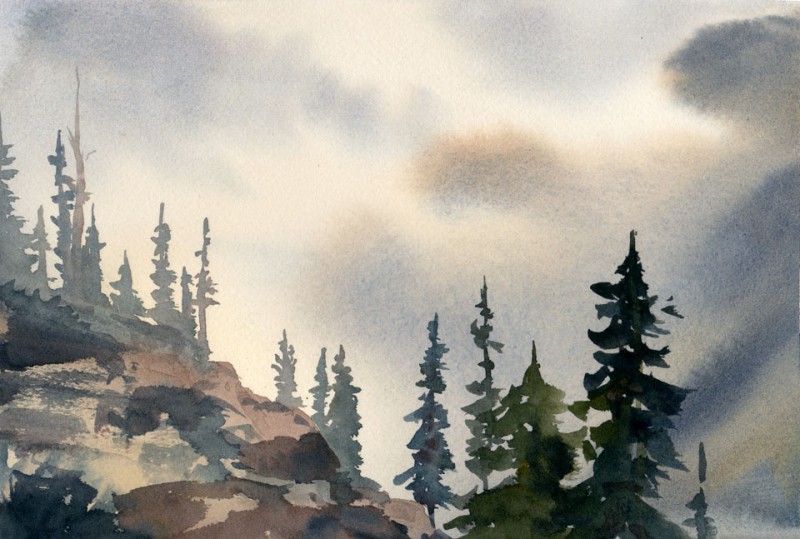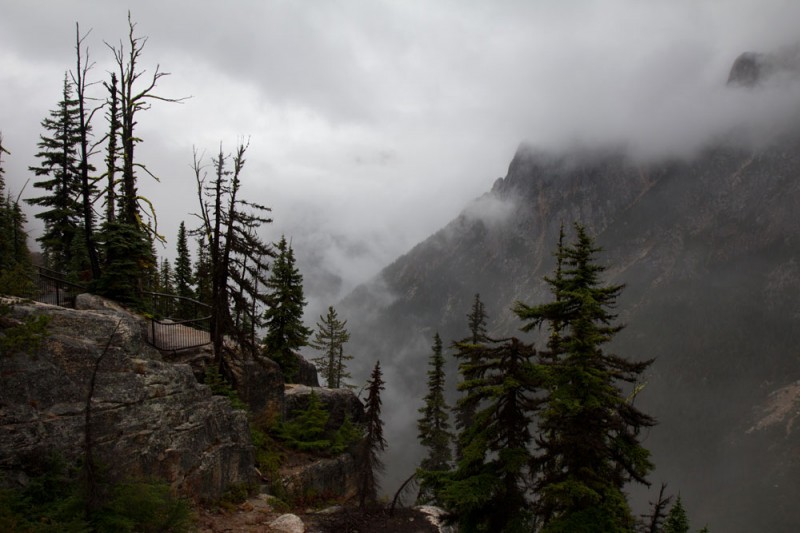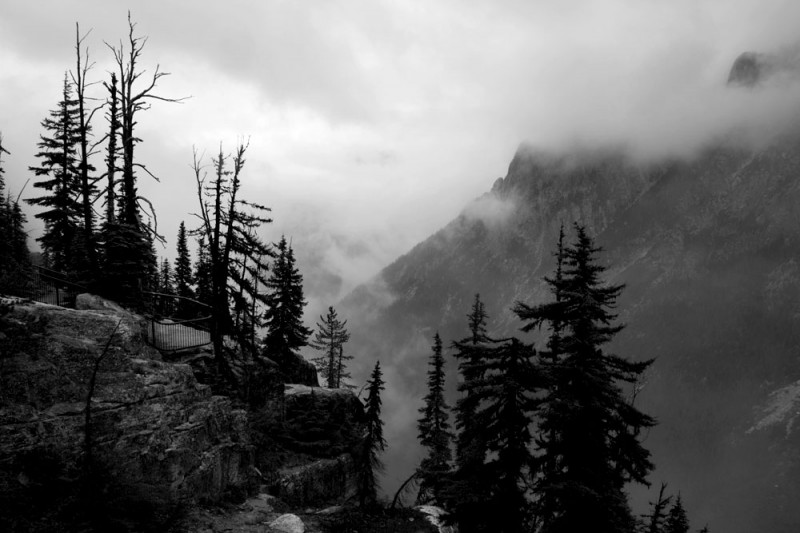Approaching Painting
Starting a watercolor painting can feel intimidating with questions of composition, mood, and techniques for layering and mixing colors. I’m a very process oriented person and enjoy having steps to follow that I can trust to lead me in productive directions. In fact, one of my favorite mantras is “trust in process”, that I learned from a college mentor of mine, Steve Davis. While approaching painting, I keep the following quote in mind, “Vision is always ahead of execution, knowledge of materials is your contact with reality, and uncertainty is a virtue.” (by David Bayles from the book Art and Fear)
My first step then is finding my vision, an image, a space, a landcape that speaks to me. I’m often attracted to the large atmospheric landscapes I’ve visited on polar expeditions as well as found on my explorations of the Pacific NW. I took this photo from Washington Pass.
When using a reference photo, my first step is to start tweaking it. I may explore different color filters, saturations, and crops. Finally, I always convert it to black and white to see focus on the abstract shapes and values. I use Photoshop on my computer or the Photogene and Snapseed apps on my iPad.

Once I have an idea of the composition, my next step is to do a simple monochromatic value study on paper, focusing on large shapes with light, mid, and dark values. This along with my reference photos becomes my roadmap for working in color.

Then I play with color! Here’s my first study painted primarily with Daniel Smith French Ultramarine Blue, New Gamboge, Quinacridone Rose, and Quinacridone Gold. I’m fairly pleased with it, although the mountain in the background may need a touch more detail to balance the composition. I may do another study, these small paintings are first and foremost explorations, and I give myself permission to play and mess around. It’s part of my process and once I feel resolved with my vision and the composition, my final step is to work larger. I’ve posted the development of the following studio paintings if you’d like to learn more!
- Storm Front, Antarctica, 22″ x 30″ watercolor
- Iceberg Patrol, Antarctica, 15″ x 30″ watercolor
- Windswept, 16.5″ x 22.5″ watercolor
- Easton Icefall, North Cascades, WA, 16.5″ x 22.5″ watercolor
- The Portals, North Cascades, WA, 16.5″ x 22.5″ watercolor


2 Responses to “Approaching Painting”
Kate
My painting mantra is, “If the painting isn’t matching your vision, change your vision.” :)
Maria
I love it, Kate! That’s the uncertainty of it all. Part of watercolor is letting go and discovering what the pigment reveals.